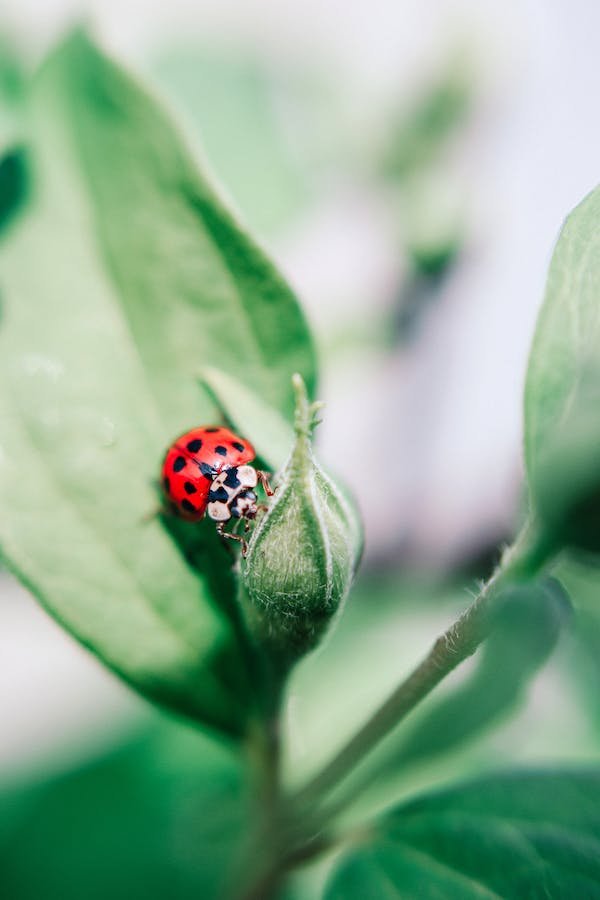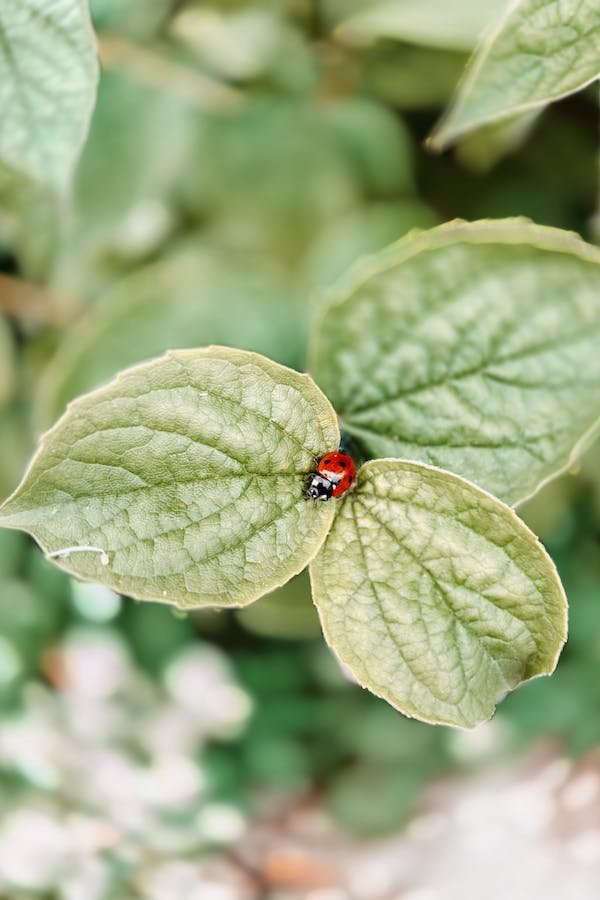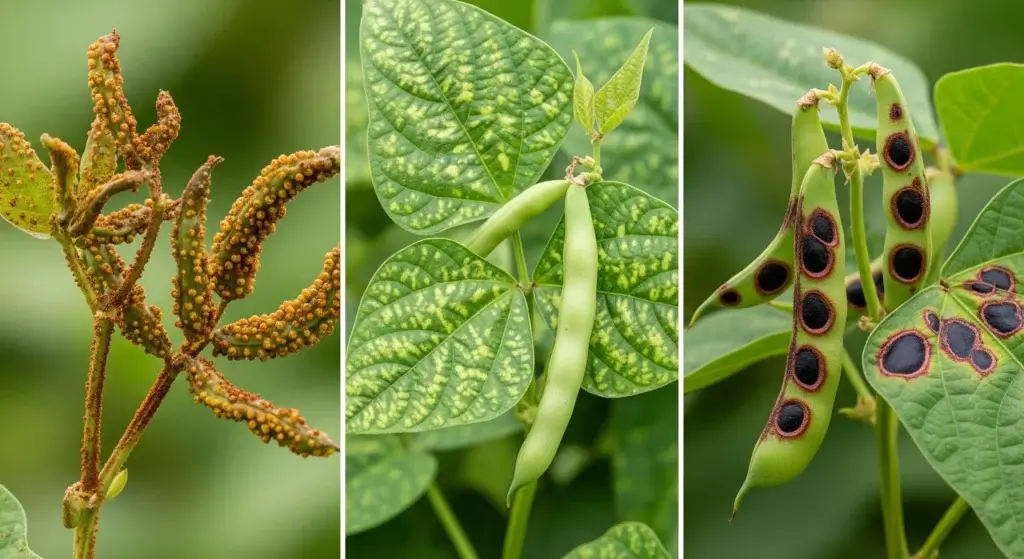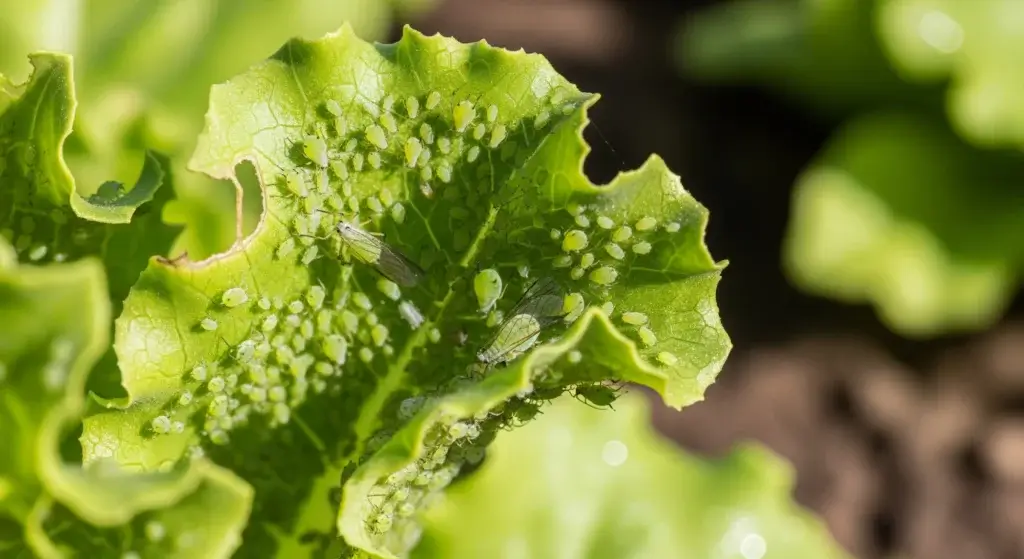
In gardens, aphids pose a persistent threat, causing harm to plants and facilitating the spread of diseases.
An organic and efficient solution lies in the introduction of ladybugs, renowned aphid predators.
This blog post delves into the advantages of utilizing ladybugs for aphid control, offering insights into attracting them naturally to your garden and maintaining an environment conducive to these beneficial insects.
Explore the symbiotic relationship between your garden and these tiny warriors against aphid infestations.
Negative Impacts of Aphids on Plants and Gardens
The presence of aphids in your garden can unleash a cascade of negative impacts, affecting both plant health and overall garden vitality.
Here are the key consequences:
Direct damage to plant tissue
Aphids extract plant sap as their primary source of nourishment.
This feeding behavior can result in tangible harm to plant tissues, manifesting as distortion, curling, or yellowing of leaves.
The compromised integrity of the plant tissue can impede normal growth, leading to stunted development.
- Read also: How To Make a Natural Pesticide
- Read also: Flowers for Vegetable Garden Pest Control
Transmission of diseases
Aphids act as vectors, capable of transmitting viruses from one plant to another during their feeding process.
This transmission of diseases can rapidly escalate, causing widespread damage across your garden.
The consequences extend beyond individual plants, significantly reducing overall crop yield.
Honeydew production
Aphids excrete a sugary substance known as honeydew as a byproduct of their feeding.
This sweet residue becomes a breeding ground for mold, creating an environment conducive to fungal growth.
Moreover, honeydew attracts additional pests, exacerbating the challenges of maintaining a healthy garden ecosystem.

How Do Ladybugs Help Control Aphids in Gardens?
Ladybugs are natural predators of aphids and can help control their populations in your garden.
They are often referred to as “aphid predators” because of their diet, which consists mainly of aphids and other small insects.
Here are some reasons why ladybugs are effective at controlling aphids:
Special adaptation for aphid consumption
Ladybugs possess a unique protein called hemoglobin in their bodies, enabling them to thrive on a diet primarily composed of aphids.
This adaptation equips them with the ability to consume aphids efficiently, making them well-suited for natural pest control.
Ability to consume a large number of aphids
Ladybugs are voracious eaters, capable of devouring a substantial number of aphids daily.
Their appetite extends to approximately 50 aphids per day, providing an effective and sustainable solution for managing aphid populations in your garden.
Minimal impact on beneficial insects
An environmentally friendly choice for aphid control, ladybugs focus their predatory instincts on aphids while having minimal impact on beneficial insects.
This targeted feeding behavior ensures that the overall ecological balance in your garden remains undisturbed.
How to Attract Ladybugs to Your Garden Naturally

Welcoming ladybugs to your garden involves creating an environment that caters to their needs.
Here’s how you can naturally attract these beneficial insects:
Plant a variety of flowers that provide nectar and pollen
Ladybugs rely on nectar and pollen as essential food sources, crucial for their energy and reproduction.
Cultivate a diverse range of flowers such as coreopsis, daisies, sunflowers, and yarrows.
These flowers not only provide sustenance but also serve as attractive landing pads for ladybugs.
Provide a place for ladybugs to lay their eggs
Ladybugs lay their eggs on the undersides of leaves.
Ensure your garden includes plants with suitable leaves, creating an inviting space for ladybugs to lay their eggs.
Providing such conducive environments encourages the establishment of ladybug populations in your garden.
Avoid using chemical pesticides
Opt for natural pest control methods over chemical pesticides.
Ladybugs, along with other beneficial insects, can be harmed by these chemicals.
Embrace eco-friendly alternatives, such as releasing ladybugs or introducing other predatory insects like hoverflies and lacewings.
This approach safeguards your garden’s delicate ecological balance.
Create ladybug-friendly habitats
Incorporate features like shallow dishes filled with water to quench ladybugs’ thirst.
Additionally, consider introducing rocks or small structures that offer hiding spots for ladybugs during adverse weather conditions or when seeking refuge.
Minimize light pollution at night
Ladybugs are attracted to garden spaces that aren’t overly lit at night.
Minimize light pollution to create a welcoming nocturnal environment for these beneficial insects.
How to Maintain Ladybugs in Your Garden

To foster a thriving ladybug population that effectively manages aphids in your garden, follow these essential maintenance guidelines:
Release ladybugs in the spring
Release ladybugs when temperatures hover around 70°F in the spring.
This optimal temperature range facilitates their adaptation and encourages the establishment of a robust population that will remain active throughout the growing season.
Release enough ladybugs for your garden’s size
Calculate the appropriate number of ladybugs needed for your garden’s size.
A general guideline is to order approximately 2 ladybugs for each square foot of your garden.
This ensures a sufficient predator-to-prey ratio, optimizing aphid control.
Monitor the health of your ladybug population
Keep a watchful eye on your ladybug population.
Observe their feeding habits and overall health regularly.
If you notice any signs of distress, such as lethargy or reduced activity, consider releasing additional ladybugs.
Investigate potential causes, such as insufficient food sources or adverse environmental conditions.
Provide supplementary food sources
Enhance the availability of food sources for ladybugs by cultivating a diversity of flowering plants that produce nectar and pollen.
This supplementary nutrition contributes to the well-being and reproductive success of ladybugs.
Additional Tips

To optimize the impact of ladybugs in controlling aphids, consider incorporating these additional tips into your garden maintenance routine:
Combine ladybugs with other natural pest control methods
Boost the efficacy of ladybug releases by adopting a holistic approach to pest management.
Integrate the use of ladybugs with other natural control methods, such as introducing predatory insects or utilizing biological pesticides like Bacillus thuringiensis.
This comprehensive strategy addresses a wider spectrum of pests, ensuring a balanced and resilient garden ecosystem.
Introduce ladybugs to your garden gradually
Facilitate a smooth integration of ladybugs into your garden by releasing them gradually.
This controlled approach allows ladybugs to acclimate to their new environment, locate suitable habitats, and establish themselves without the stress associated with the sudden introduction of a large number of predators.
Gradual releases enhance the effectiveness of aphid control over time.
Consider companion planting
Explore the concept of companion planting to naturally deter aphids.
Certain plants, such as marigolds, chives, and nasturtiums, act as natural repellents for aphids.
Strategically incorporating these plants in proximity to susceptible crops complements the efforts of ladybugs in maintaining a pest-resistant garden.
Monitor aphid levels
Regularly monitor aphid levels in your garden to gauge the effectiveness of your pest control measures.
Assessing the population dynamics enables you to adjust ladybug releases and other interventions as needed, ensuring a proactive and adaptive approach to aphid management.
- Read also: Natural Pesticides for Vegetable Garden
- Read also: Natural Pesticides for Fruit Trees
Conclusion
In the quest for garden harmony, ladybugs emerge as a powerful and natural ally in the battle against aphids.
Their presence not only ensures effective aphid control but also contributes to the overall health of your garden.
By strategically attracting, nurturing, and synergizing ladybugs with other natural pest control methods, you can curate a thriving environment for healthy plant growth.
FAQs
Order about 2 ladybugs for each square foot of your garden to ensure there are enough predators to control the aphid population.
Release ladybugs in the spring when temperatures are around 70°F to help establish a population that will remain active throughout the growing season.
Yes, ladybugs are safe to use in gardens with pets or small children, as they are natural predators that feed on pests and do not harm beneficial insects or people.



